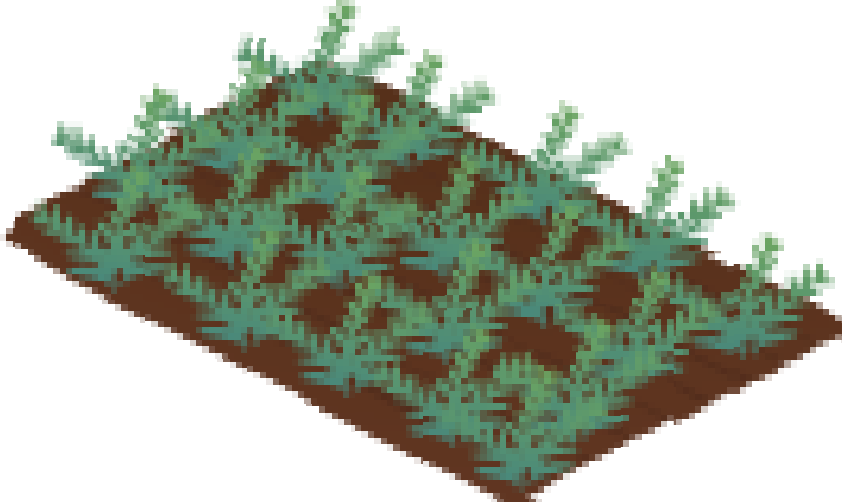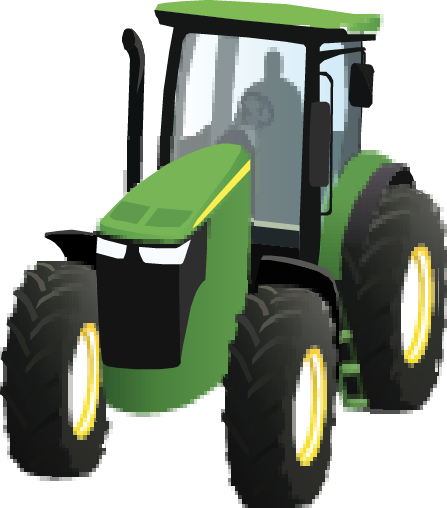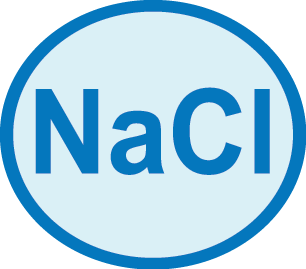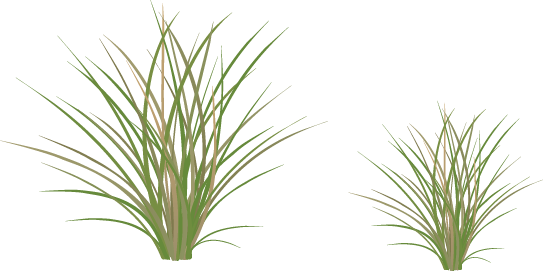We identified 7 traits within the primary evaluation category of resilience that together provide an overall resilience rating:
Drought and heat tolerance - Heat reflected from the pavement and the constant wind from passing vehicles results in a microclimate along roadsides that is droughty. In addition, roadsides are engineered to rapidly drain water away from the roadside into swales, storm drains or storm water retention ponds, decreasing the availability of water to roadside vegetation. Providing supplemental irrigation for roadside vegetation is cost-prohibitive such that turfgrass species selected for roadsides need to be drought tolerant to survive. Drought tolerance is conferred through a range of morphological and physiological mechanisms, the most common of which are deep root systems that allow plants to avoid drought by accessing water resources deep in the soil column; low evapotranspiration rates that conserves water within leaves; and dormancy during the hottest and driest times of the summer.
Tolerance to low fertility soils - Soils after construction are generally poor, low in organic matter, microbial activity, and cation exchange capacity. It is often recommended to amend roadside soils with compost after showing that the soil amendments were able to enhance persistence as opposed to using salt and drought tolerant cultivars. Nitrogen deposition is higher along roadsides owing to vehicle exhaust, which can interact with salt to increase plant uptake of nitrogen.
Cold and freezing tolerance - Maryland is located in the transition zone between warm climates of the southern United States that are suitable for warm season grasses with the C4 photosynthetic pathway, and cool climates in the northern U.S. that are more suitable for cool-season grasses with the C3 photosynthetic pathway. The transition zone provides opportunities for using a diversity of turfgrass species in roadside plantings but also places many species at the edge of their range. Maryland, for example, delineates the northern edge of the bermudagrass range and may be close the southern edge for red fescue. Furthermore, Maryland spans a wide elevation range from sea level to over 3000 feet (=1000 m) on the Appalachian Plateau and thus offering a range of climates. Cold temperatures and freezing soils and sod are therefore important considerations for assessing the suitability and potential for success of turfgrasses along roadsides in Maryland.
Salinity tolerance - Deicers are used in winters to keep roads free of ice. These salts leach into the soils along roadsides and leave residues on above-ground plant parts that can negatively impact germination, growth, and survival. Other research has found that salt was the primary cause of turfgrass failure along roadsides but that persistence could be significantly improved by amending soils. Both sodium and chloride are toxic to plants and can interfere with a plants’ water holding capacity, but tolerance to high salt levels vary among species and cultivars and with plant developmental stage. It has been observed that foliar exposure was most likely an important aspect of relative salinity tolerance assessments and argue that under prolonged exposure to salinity, cultivar selection is of little importance relative to species selection.
Tolerance to acid soils - Most soils in Maryland (without addition of agricultural lime) tend to be acidic and buffered by the Al system. Thus, native soils are generally between pH of 4.0 to 5.5. Some surface horizons enriched in organic materials may have even lower pH values. Exceptions to these would be particular types of geological parent materials that are less extensive, and which are more base-rich; limestone and dolomite (for sedimentary rocks) and mafic igneous and metamorphic rocks (such as in the Baltimore gabbro complex, the Boyds diabase sill in Montgomery county, and various diabase dikes associated with the triassic rocks of the piedmont.) These exceptional cases could have subsoil pH values that range into the mid-6s, although surface horizons may be more weathered, organic rich, and thus, have lower pHs than the subsoils. The soils along highways are challenging, because the earth has been disturbed during construction. Thus, it is often unclear what soil horizons might be exposed at the surface and therefore hard to predict what soil pH would be. Topsoils that are tested along MD roadsides immediately after road construction can have high pH but it is unclear how long this condition lasts. We rated species more highly if they could tolerate a wide range of pH’s, including acid soils and high aluminum tolerance.
Wear tolerance - Roadside environments need to be mowed regularly to maintain aesthetic appeal, provide sight distance, and minimize fire hazards. Roadsides also see some traffic from cars that pull over during emergencies. Thus, turfgrasses planted along roadsides have to be able to withstand traffic from vehicles.
Tolerance to competition - To survive in a community with other plant species, a grass species needs be competitive enough to withstand competition pressure for light, nutrients, and water from other species. This includes resisting the invasion of weeds, which are successful when resident species do not provide adequate ground cover and hence offer niche opportunities for new colonizers.










![]()



